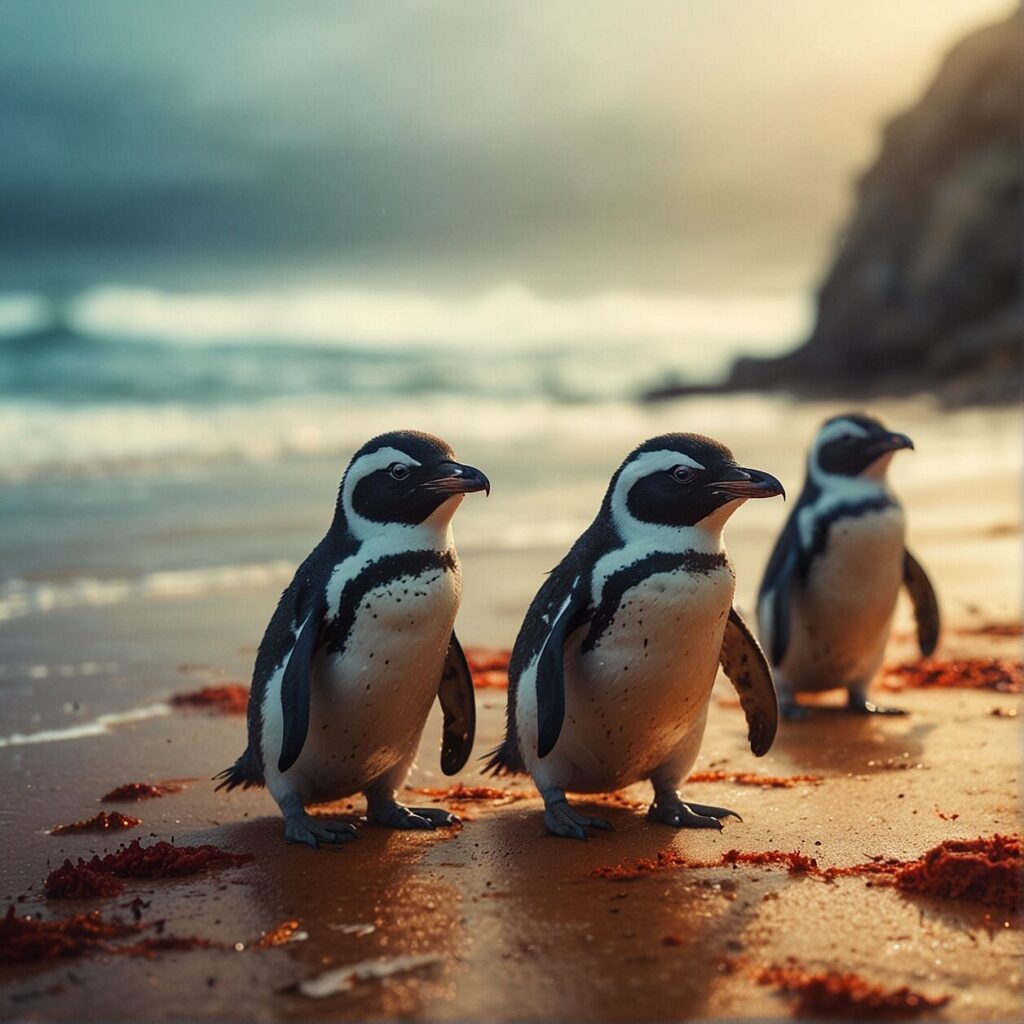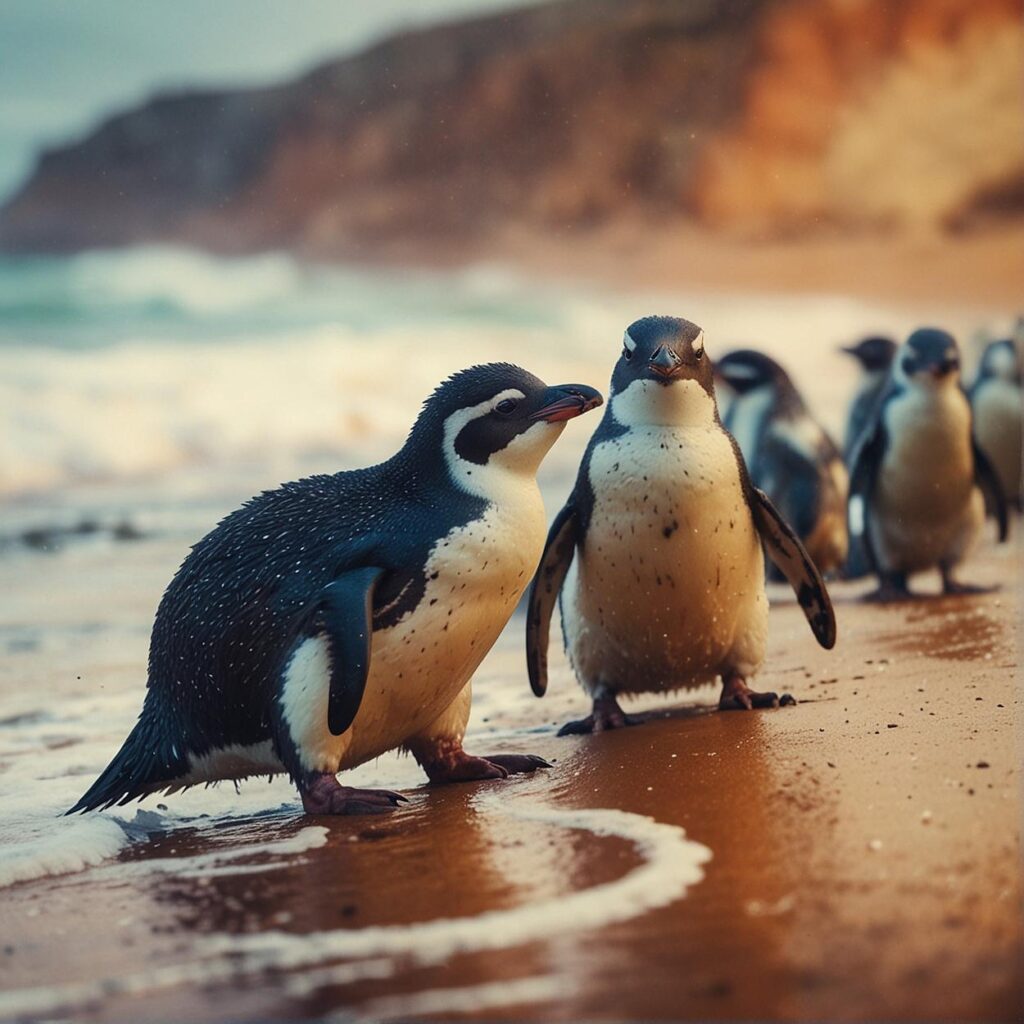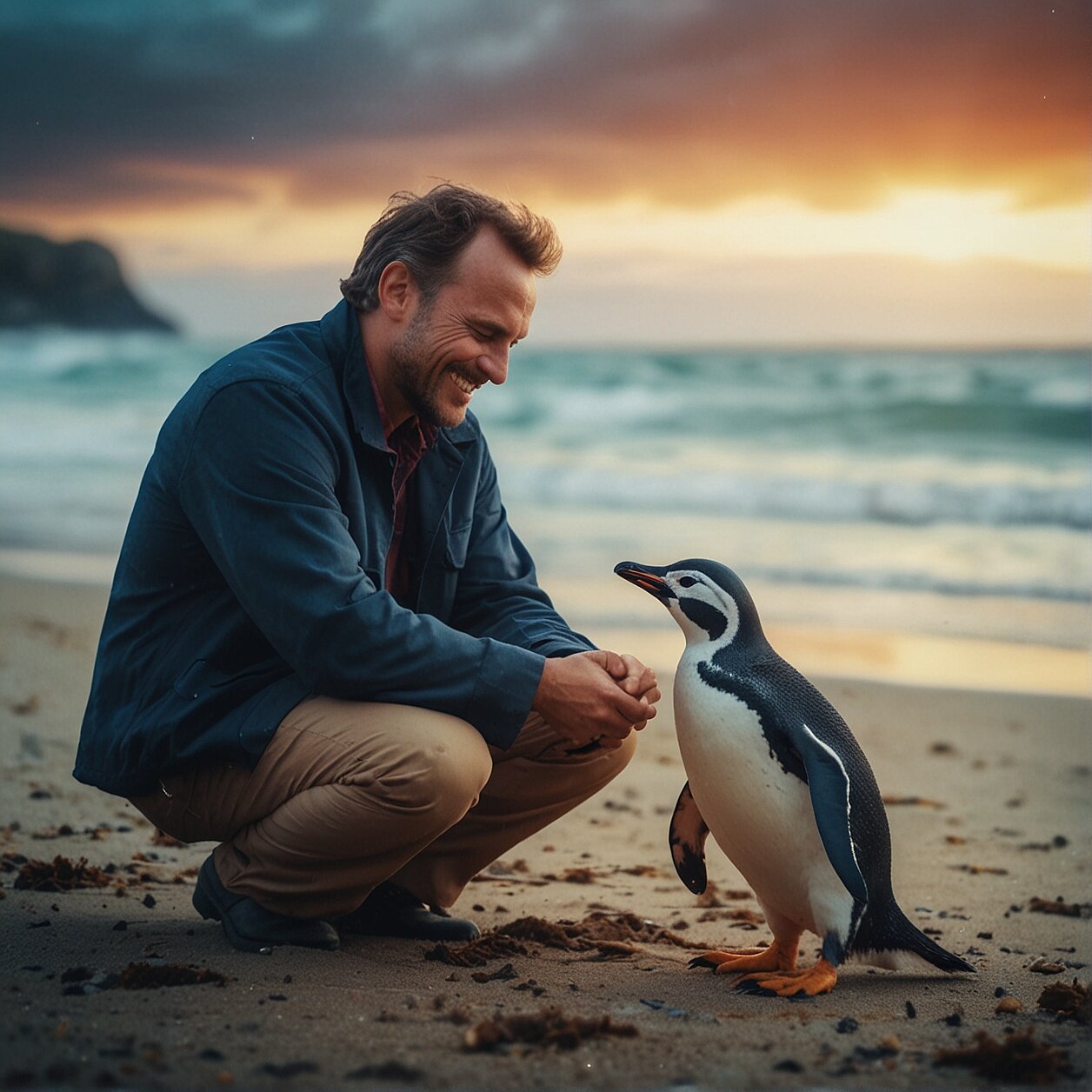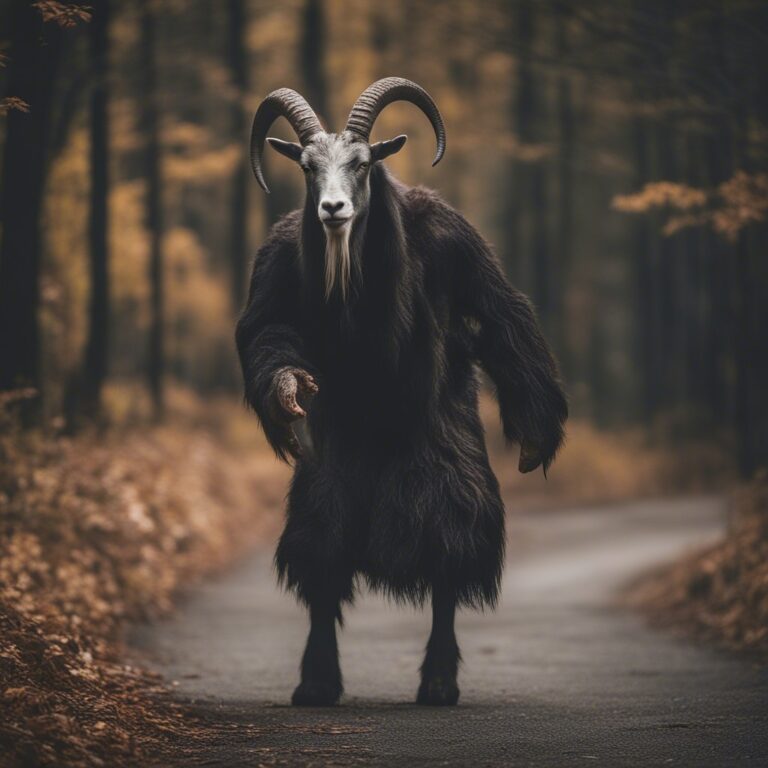Meeting the World’s Smallest Penguins in Australia
If you’ve ever dreamed of witnessing the magic of seeing fairy penguins in their natural habitat, then look no further. Fairy penguins aren’t just about their enchanting appearances, they are known for their remarkable resilience and unique behavior that even seasoned wildlife observers find captivating. Imagine standing under a horizon full of stars, on a serene beach while these petite creatures waddle past, indifferent to your presence – a truly surreal experience!
This article is your guide to enjoying this spectacle respectfully, and promoting their conservation. We will explore:
- Understanding fairy penguins,
- Discovering the best spots in Australia to see them,
- Observation tips for responsible wildlife viewing and,
- Being a courteous guest in their territory.
“Every creature in the wild gives us a unique chance to step out of our narcissistic lives and connect with a world where our existence or non-existence takes a backseat.” – Jane Goodall
So, clinch your hiking boots, bring a warm jacket, and have a keen eye. Get ready for an adventure that could change your perspective on life, with none other than the tiny, majestic fairy penguins!
Fairy Penguins: The Smallest Penguins of the World
Sure, here’s a continuation of the section about Fairy Penguins.
At a petite size no taller than 33 centimeters and a weight scarcely reaching over just 1 kilogram, fairy penguins are indeed the smallest penguin species on Earth. Also known as “little penguins,” they’re a delightful sight to behold. Their compact bodies are cloaked in a sleek layer of ink-blue feathers on the back and white on the front, which earns them their alternative moniker, “blue penguins”.
These pint-sized waddlers mainly inhabit the coastal areas of Australia and New Zealand. They bring a unique charm to their land, creating a perfect blend of raw nature and magical encounters. It’s a treat to watch them waddle, swim swiftly in pursuit of their catch, or even just comfortably nestle in their burrows.
Fairy penguins live and thrive in colonies. In the wild, they dot the coastal lines and islands, living in burrows they dig in sand dunes or coastal vegetation. This social behavior makes it easier for travelers like you to spot them and witness their natural habits. They indulge in a banquet of seafood, devouring everything from small fish to squid and sea crustaceans.
Respecting their space and contributing to their conservation is extremely important. While it is undoubtedly exciting to witness these adorable creatures up close, it’s essential to remember that they’re wild animals. They live in natural habitats that we need to protect and preserve. The experience of encountering fairy penguins in the wild should leave both you and the penguins feeling safe and respected.
Discover the Magic: Where to Find Fairy Penguins in Australia
Imagine, if you will, a grand adventure that will lead you to the encounter of the smallest and arguably cutest members of the penguin family— fairy penguins, also known as Little Penguins. Australia, particularly its southern and western coasts, presents such an opportunity, with a plethora of locales where these endearing creatures make their homes.
Start your journey along the spectacular coastline of Victoria, towards Phillip Island Nature Parks. The highlight of your trip could be the magic of the Penguin Parade, where you can watch these little heroes waddle ashore from the ocean at sunset. The sight of them marching sand-borne towards their burrows is a captivating memory you will treasure forever.
Moving west, South Australia offers another chance for a fairy penguin encounter. Granite Island, famed for its unique granite formations, is also home to a significant fairy penguin colony. Here, you have the chance to catch a glimpse of the penguins going about their daily lives as they fish for food and interact with each other, dropping the guard they hold up under a watchful human gaze.
Continuing your journey, Western Australia presents a fewer known but equally enchanting opportunity to spot fairy penguins at Penguin Island. Despite the island’s small size, it’s an essential habitat for the largest population of fairy penguins in Western Australia. Revel in the spectacular fusion of sheer natural beauty and delightful wildlife experience as you explore this special destination.
Remember, while witnessing these feathered fellows is undoubtedly an awe-inspiring experience, it’s crucial to observe them without disturbing their peace. Consider your role carefully – rather than a disruptive visitor consider yourself an honoured guest in their environment. Let’s ensure that our love for these creatures contributes to their conservation and not unwitting destruction.

Observation Tips: Respectful and Responsible Penguin Watching
Let’s dive into the practices that allow us to observe these adorable creatures responsibly. First and foremost, keep your distance. It is crucial to respect their personal habitat and refrain from touching or feeding them. Fairy Penguins are wild animals, and we must allow them to behave naturally. Respecting their space means not interrupting their routines.
Remember to keep noise levels down. Fairy Penguins can get stressed easily by loud noises. Ensure your phone’s on silent, and refrain from loud conversations or laughter while around these creatures. It’s about keeping their habitat as serene as possible.
Littering is a big no-no. This isn’t just about keeping their environment clean, but also about their safety. Fairy Penguins, like many wild animals, can mistake plastic and litter for food, which can be life-threatening.
Furthermore, it’s essential to use proper lighting when observing these creatures after sundown. Their eyes are very sensitive to light. Opt for a dim, red-coloured flashlight which is less likely to disturb them.
Last but not least, always heed the instructions and guidelines given by the local authorities or park officers. They know what’s best for these creatures, and following their advice ensures the penguins’ wellbeing is prioritized.
Remember, your experience observing Fairy Penguins will be much more gratifying when we do our part in safeguarding their habitat and ensuring their survival. This way, future generations can also enjoy the unique and compelling spectacle of seeing Fairy Penguins in the wild.
Being a Good Guest: Dos and Don’ts in Fairy Penguin’s Territory
You’ve arrived in the land of fairy penguins, excited, thrilled, ready to soak in this incredible spectacle. The air is crisp, the sky clear, and it goes without saying that eagerness is palpable. But don’t forget, you’re a guest in their home. Approach your visit with respect and conscious behavior, mindful of protecting these precious creatures and their habitat.
Do Stick to Designated Paths
For starters, stay on the well-trodden paths outlined by park officials. Straying from designated routes can lead to trampling nesting sites or frightening penguins, disrupting their daily routines. Ground nests are common among these birds and they’re often out of sight, so veering off the path might mean intruding into a penguin’s personal space.
Don’t Feed or Touch the Penguins
Feeding or petting these penguins might seem like a harmless gesture, but it’s not. These are wild animals and human food or contact can be harmful or stressful for them. These practices could lead to dependent behavior, making them vulnerable to predators and hampering their ability to function in the wild. Remember, the goal is to watch and appreciate, not aggregate or interact.
Do Keep Noise to a Minimum
Excess noise can put stress on fairy penguins, introducing an element of unnerving disruption into their ordinarily peaceful environment. So, keep conversations low and refrain from calling out to the creatures. maintain a tranquil environment, ensuring the fairy penguins don’t perceive human presence as threatening.
Don’t Use Flash Photography
We all want keepsakes of our wildlife adventures, but flash photography can be startling and harmful to the penguins. Instead, use binoculars to get a good look and enjoy the chance to observe without altering their natural behavior.
Scrupulously following these guidelines ensures not just an ethical fairy penguin-watching expedition but helps uphold the preservation of their habitat. The ‘feel-good’ factor of responsible tourism is impossible to overstress, and you’ll leave knowing your visit wasn’t ruinous but a chance to be a part of fairy penguin conservation.

The Spots to Spot: Top Locations for Fairy Penguin Sightseeing
With a keen sense of adventure and a bit of patience, you’re well on your way to spotting these delightful creatures in their natural habitat. Here are some top locations that serve as the perfect backstage for fairy penguin sightings; each place unique and beautiful in its own right.
1. Phillip Island, Victoria: The largest colony of fairy penguins resides here. Each day at dusk, you get to witness the ‘Penguin Parade’ as these little creatures waddle back to their burrows after a day at sea. The well-constructed boardwalks allow you to stroll around the ground with minimal disturbance to the wildlife.
2. Montague Island, New South Wales: Just off the coast to the south of Sydney, you’ll find Montague Island – an exclusive spot to observe the fairy penguins. Plan an overnight stay to truly experience the enchanting behaviours of these birds in the moonlight.
3. St Kilda, Victoria: Situated in the heart of Melbourne, St Kilda Beach transforms into a magical habitat as the sun dips below the horizon. The breakwater of the beach is a safe haven for a colony of fairy penguins and serves as a great spot for up-close sightings.
4. Bicheno, Tasmania: The rocky coastline of Bicheno serves as the perfect nesting ground for fairy penguins. Guided tours are available here that enlighten you about these amazing birds and motivate conscientious viewing practices.
While venturing to these unique places, remember that we are visitors in their home. Be respectful to the fairy penguins and the environment to contribute to their protection and conservation.
FAQ’S
As you prepare for your adventure in search of the enchanting fairy penguins, you probably have a few questions buzzing in your mind. This FAQs section is dedicated to addressing those queries, providing additional insights, and ensuring that you embark on this fascinating journey equipped with all the crucial information. Here, we dive deeper into some intriguing aspects of fairy penguins and provide guidelines about the best times and conducts for observation. Get ready to delve into the unknown!
What are some interesting facts about fairy penguins?
Well, if you’re curious about these tiny wonders of nature, you’re in for a treat. Fairy penguins, also known as Little Blues, stand unique as the world’s smallest species of penguins. These delightful seabirds, no taller than a foot, have a distinct blue to silver-grey hue, which isn’t something you’ll find amongst their larger, Antarctic cousins. The name ‘fairy’ doesn’t just nod towards their petite size, but also to their fantastical, whimsical appeal.
Here’s another fascinating fact: fairy penguins are faithful creatures, one might even say romantics at heart. Once they pair up, they typically stay loyal to their partners for life, sharing parenting duties as they take turns foraging for food while the other guards the precious nest.
And did you know that fairy penguins lead a dual life? Their day is spent swimming and fishing in the ocean, while at night, they return to their burrows on land. It’s no ordinary feat for a creature of such small stature to traverse these two worlds seamlessly. They are able to travel 15-50km out to sea in a single day, and dive up to 60m deep to catch their food, quite an impressive feat wouldn’t you say?
Also, incredibly cute as they may be, these little blues are tough survivors too. Despite their small size, they manage to endure the rough Southern Ocean and hazardous predators, including sea lions and bigger birds of prey, thanks to their swift agility and hard-to-spot-blue hue in the water.
Lastly, let’s talk about their vocal prowess. Far from the conventional penguin ‘honk’, Fairy Penguins trill, bray, caw, and growl, each sound a unique message from a ‘hello’ to a warning. Only adding to their enchanting charisma.
What is the best time of year to see fairy penguins in Australia?
The most fascinating time to witness fairy penguins in their natural habitat is during breeding season, which spans from August to February. This is a period when these charming creatures are most active, making it an ideal time to observe their daily routines and captivating social behavior.
However, don’t dismiss the rest of the year just yet! Fairy penguins are not seasonal migrants, meaning they do not disappear entirely outside of the breeding season. They spend the day out at sea fishing and return to their burrows at dusk, all year round. Imagine a parade of tiny blue feathered bodies waddling along the sand at sundown – an enchanting sight indeed!
Yet, it’s crucial to remember that nature’s spectacle shouldn’t come at the cost of the penguins’ well-being. Always give them space, don’t use flash photography, and observe silently to ensure you’re respecting their natural behavior. Check with local wildlife authorities for any specific viewing guidelines during your visit.
What other wildlife might I encounter while observing fairy penguins in Australia?
Exploring Australia offers an amazing biodiversity, a real haven for nature lovers. When you’re on your expedition to spot our fascinating fairy penguins, you’re bound to encounter a whole host of other amazing critters and creatures. A little extra care and some watchful eyes will give you quite an unforgettable experience.
While visiting the places where fairy penguins waddle and swim, you might also encounter a variety of seabirds. Pelicans, terns, and sea gulls share these coastal habitats and can often be spotted soaring in the skies above.
If you venture into the nearby bushland, you’ll find unique marsupials like koalas snoozing high in the eucalyptus trees and playful kangaroos bounding their way across national parks. Wombats can be found digging their burrows in these areas too.
Do keep an eye out for snakes such as the tiger snake or the eastern browns, both venomous native denizens of Australia. While they are generally shy and would rather escape from humans, any interaction should be avoided, and their presence should be respected.
By the sea, you might even be lucky enough to spot a dolphin or two frolicking in the crystal-clear waters, and the changing seasons bring whales migrating along the coast.
So remember, while the fairy penguins may be your primary focus, the whole ecosystem around them is buzzing with other wildlife too. Take your time, respect their space, and immerse yourself in the unparalleled biodiversity of Australia.
Can you interact with fairy penguins in Australia?
You might be tempted to reach out and touch these charming creatures or try to get that perfect selfie with them. However, the answer to the often-asked question, ‘can you interact with fairy penguins in Australia?’ is a firm NO. At least not in the way you might want.
Fairy penguins, like any other wildlife, must be left undisturbed in their natural habitats. Any form of human interaction could stress them and disrupt their daily routines. Please remember, your visit should not in any way threaten their wellbeing.
Instead, appreciate their antics from a safe distance. Observe as they waddle along the beach, interact with their mates, or skillfully navigate the sea. The joy is in witnessing these natural behaviours without causing any disturbance.
There may be some specially guided tours or wildlife parks where you can have a closer encounter with these adorable creatures, under controlled conditions and expert supervision. Even here, respect for their space and comfort remains paramount. Always follow the guidelines set by the park authorities or your tour guide.
In conclusion, while you cannot physically interact with the fairy penguins, the experience of watching them in their natural setting is an interaction of another kind, enabling you to connect with nature in a profound and rewarding way.
Are there any guided tours to see fairy penguins in Australia?
Absolutely, several guided tours offer visitors a unique chance to see these charming creatures up close. Such tours are designed not only to enrich your understanding of the fairy penguins but also to educate about the importance of their conservation.
One of the most popular tours takes place on Phillip Island, a wildlife haven located around 90 minutes from Melbourne. The highlight of this tour is the ‘Penguin Parade’, which lets you observe fairy penguins returning to shore at sunset, after spending the day fishing in the sea.
At St. Kilda Pier, near the city of Melbourne, guided tours lead you to a small colony of fairy penguins. Tour guides share captivating details about these birds, adding layers of understanding and appreciation to your encounter. And, what sets this visit apart is it’s free! So, responsibly observe these miniature wonders without feeling a pinch in your pocket.
Remember, while these tours provide extraordinary experiences, it’s essential to note that the welfare of the fairy penguins remains the priority. Always follow the guidelines set by your tour guide, ensuring a safe and respectful encounter.
The guided tours are a fantastic way to contribute to the local economy, support conservation efforts and gain a deeper understanding of how these little creatures play a significant part in the ecosystem.







